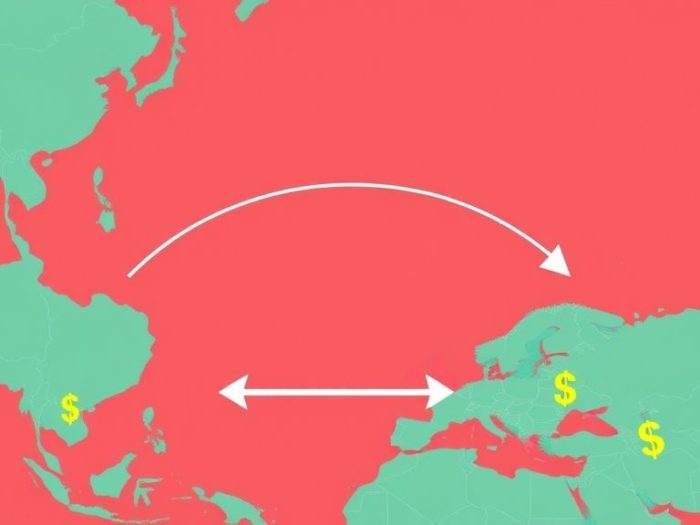The currency carry trade is a strategy that aims to profit from the interest rate
differentials between currencies. While it can offer the potential for passive
income, it also involves significant risks. This article explores how to build a
currency carry trade portfolio, emphasizing the strategies and risk management
techniques involved.
Understanding the Currency Carry Trade
A currency carry trade involves borrowing a currency with a low interest rate and
using those funds to purchase a currency with a high interest rate. The trader
profits from the difference in interest rates (interest rate differential).
Key Components of a Carry Trade
-
High-Yield Currency: The currency you buy, which offers a higher
interest rate. -
Low-Yield Currency: The currency you borrow, which offers a lower
interest rate. -
Interest Rate Differential: The difference in interest rates between
the two currencies. -
Swap: The interest paid or earned on holding the currency pair
overnight.
Building a Carry Trade Portfolio
1. Identify High and Low-Yield Currencies
Research the interest rates set by central banks in different countries.
-
High-Yield Currencies: Historically, emerging market currencies or
currencies from countries with relatively high interest rates. -
Low-Yield Currencies: Historically, currencies like the Japanese
Yen (JPY), Swiss Franc (CHF), and Euro (EUR).
2. Select Currency Pairs
Choose currency pairs with a significant interest rate differential.
3. Analyze Economic and Political Stability
Consider the economic and political stability of the countries involved. Unstable
conditions can lead to currency devaluation and significant losses.
4. Assess Interest Rate Trends
Analyze the trends in interest rates. If the central bank of the high-yield currency
is expected to lower rates, the interest rate differential may decrease.
5. Manage Risk
Risk management is crucial in carry trades.
-
Position Sizing: Determine the appropriate position size to limit
your risk. -
Stop-Loss Orders: Use stop-loss orders to automatically exit trades
if the price moves against you. -
Leverage: Use leverage cautiously, as it can amplify both profits
and losses.
Example
Let’s say the interest rate in country A is 5%, and the interest rate in country B
is 0.5%. You borrow the currency of country B and buy the currency of country A.
You profit from the 4.5% interest rate differential.
Risks of Carry Trades
-
Currency Fluctuations: The exchange rate can move against you,
resulting in losses that outweigh the interest earned. -
Interest Rate Changes: Changes in central bank policies can reduce
the interest rate differential. -
Economic Instability: Economic crises or political instability can
cause currencies to devalue rapidly. - Leverage Risk: Leverage magnifies both profits and losses.
Conclusion
Currency carry trades offer the potential for income but involve significant risks.
Careful selection of currency pairs, thorough analysis of economic and political
factors, and disciplined risk management are essential for success. Always remember
that forex trading carries inherent risks, and losses are possible.
Related Keywords
Currency carry trade, forex carry trade, carry trade strategy, high-yield currency,
low-yield currency, interest rate differential, forex trading, forex risk
management, forex income strategy, forex trading for beginners.
Frequently Asked Questions (FAQ)
1. What is a currency carry trade?
A currency carry trade involves borrowing a currency with a low interest rate
and using those funds to purchase a currency with a high interest rate.
2. What is a high-yield currency?
A high-yield currency is a currency that offers a relatively high interest
rate.
3. What is a low-yield currency?
A low-yield currency is a currency that offers a relatively low interest rate.
4. What is the interest rate differential?
The interest rate differential is the difference in interest rates between
the high-yield and low-yield currencies.
5. What is “swap” in forex trading?
Swap is the interest paid or earned for holding a currency pair overnight.
6. What are some examples of historically low-yield currencies?
Historically, currencies like the Japanese Yen (JPY), Swiss Franc (CHF), and
Euro (EUR) have often been considered low-yield currencies.
7. What are the key risks of carry trades?
The key risks include currency fluctuations, interest rate changes, economic
instability, and leverage.
8. How can currency fluctuations impact carry trades?
If the exchange rate moves against you, the losses from currency fluctuations
can outweigh the interest earned.
9. Why is economic and political stability important in carry trades?
Economic crises or political instability can cause currencies to devalue
rapidly, leading to significant losses.
10. Is the carry trade a guaranteed way to make money?
No, the carry trade is not a guaranteed way to make money. It involves
significant risks, and losses are possible.



